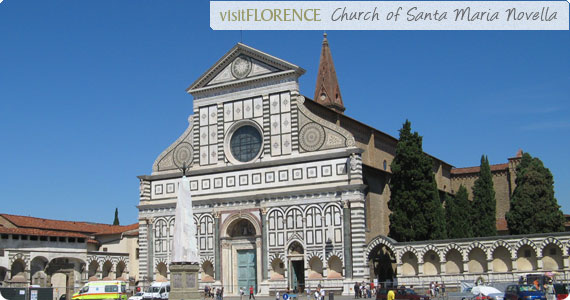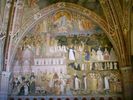See all Museums in Florence
The Church of Santa Maria Novella & Museum
Piazza di Santa Maria NovellaFlorence http://www.visitflorence.com/florence-churches/santa-maria-novella.htmlAbout
AddressPiazza di Santa Maria NovellaFlorenceTicketFull € 5,00 Reduced € 3,50 (over 65, children between 5-18 years old) Free for under 5, disabled and person providing assistance, ICOM members Firenze Card holders: reserved entrance is through Piazza della Stazione, 4 only Opening hoursOpen everyday, including religious and national holidays Weekdays 9am - 5:30pmFridays 11am - 5:30pmSaturdays 9am - 5pmSundays and religious holidays 1 - 5pm (from noon July-September) Ticket office closes 45 minutes before closing times. * Photos or video recordings are now allowed, with no flash The Church of Santa Maria Novella might not be at the top of your list of places to visit in Florence but we highly recommend you place it on there. Architecturally, it is one of the most important Gothic churches in Tuscany. The exterior is the work of Fra Jacopo Talenti and Leon Battista Alberti. The interior holds extraordinary works of art including Masaccio's Trinità, Ghirlandaio's fresco cycle in the Tornabuoni Chapel and Giotto's Crucifix, among others. The convent was built between 1279 and 1357 by Dominican friars near a 7th century church located in the fields just outside Florence's medieval walls. The lower part of the marble facade, which is Romanesque in style, is believed to have been executed by a Dominican architect, Fra Iacopo Talenti da Nipozzano, while the upper part was completed only 100 years later in 1470 by Leon Battista Alberti. Thus, the facade is not only the oldest of all the churches in Florence but it is also the only church with its original, planned facade still in place today! As you will see, the church of San Lorenzo never even received its planned marble facade while others were completed centuries later... but with new designs. What to see inside Inside, the church is vast and looks even longer than it is thanks to the clever coloring of the central arches. The layout is supposed to be work of Brunelleschi, the same architect of the Duomo's cupola. From the very beginning, great works of art were conceived for the church by masters such as Masaccio, Giotto, Filippino Lippi, Duccio di Buoninsegna and Ghirlandaio, just to name a few. While some are conserved at the Uffizi today (in particular, Duccio di Boninsegna's Enthroned Madonna and Child), you need to visit the church to see many of these magnificent works of art by some of the greatest artists of our times. Masaccio The Trinità, or Trinity, by Masaccio is on the far wall right in front of you as you enter the church through the side door. The Trinità (1424-25) is one of the earliest paintings to demonstrate mastery of perspective. Also notice that the Virgin Mary is not portrayed as a young girl as in so many other paintings; here, she is older and is clearly a mother. The entire church was initially covered in frescoes but these were painted over in the 16th century by Vasari when he carried out massive works ordered by Cosimo de' Medici. The Trinità was fortunately only covered by a massive painting and actually "rediscovered" around 1860 when further refurbishments were carried out. Vasari's changes: The church initially was divided into two parts: the higher part closer to the altar was divided by a wall and reserved for the friars while the lower part was open to the faithful that entered by the eastern side door. This wall was demolished by Vasari in the 16th century but you can clearly see where the division used to be as Giotto's Crucifix hangs right above. Had you ever wondered why the pulpit is sometimes half way down the church This division is why: the pulpit is so far down the church because it was in the lower part for the public. The side door was also closed off by Vasari and was just reopened in 2000 on occasion of the Jubilee celebrations. Having visitors enter through the side entrance today permits us once again to correctly observe Masaccio's Trinity as it was intended. Giotto's Crucifix The


